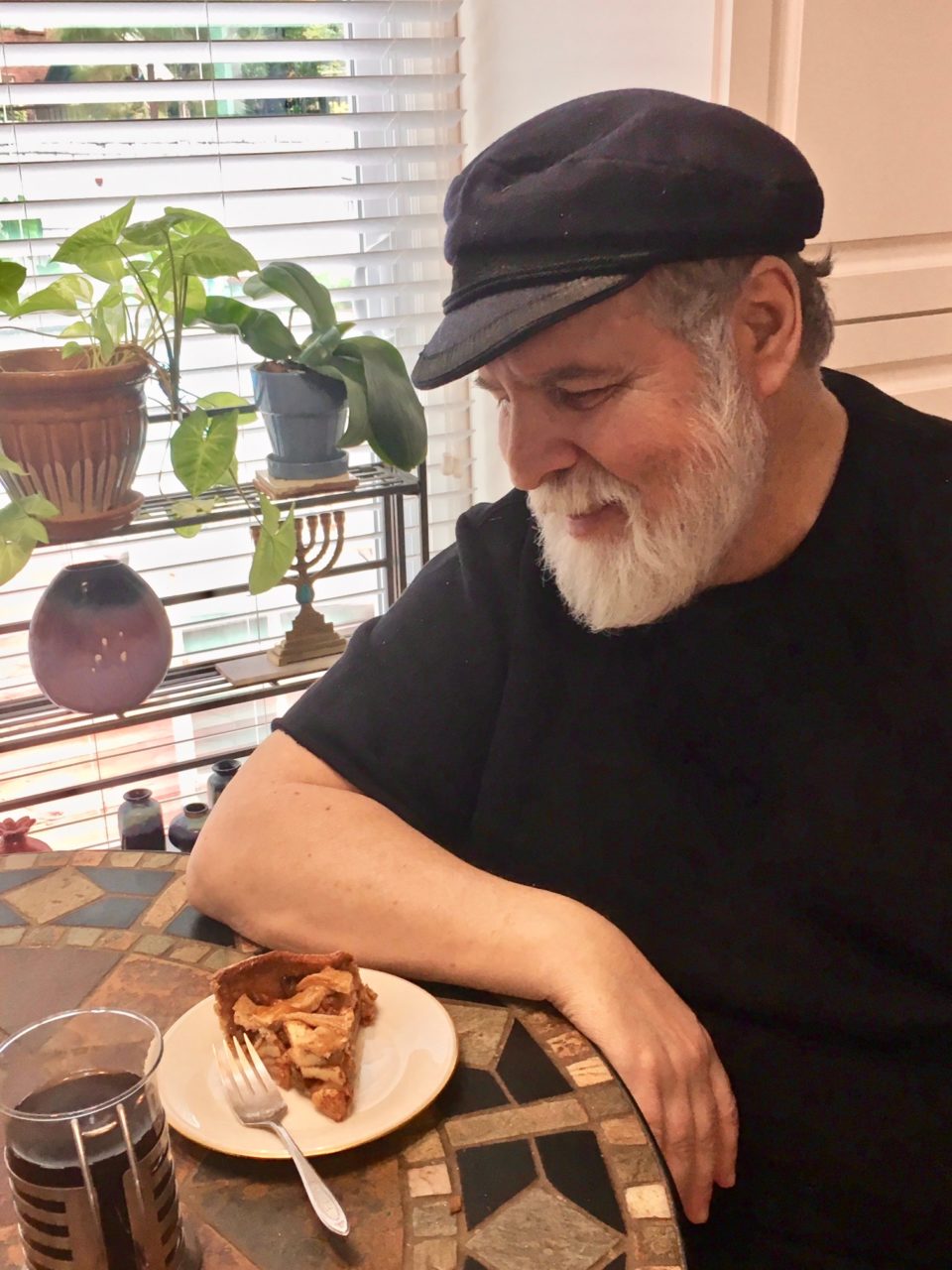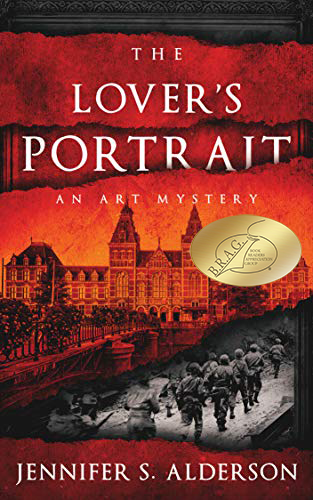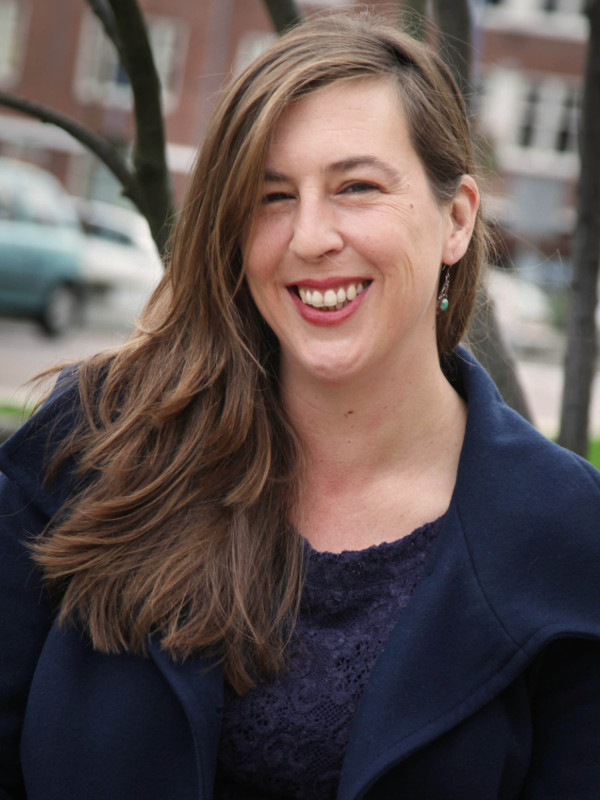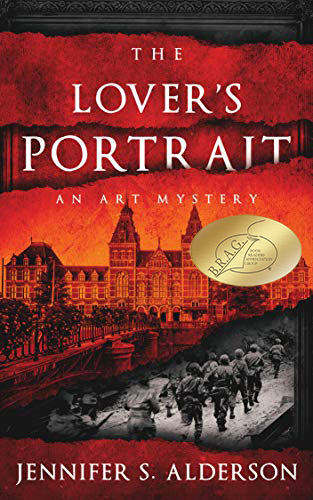Jennifer Alderson has created a fast-paced and suspenseful historical novel about art theft In the Netherlands. Two timelines connect the plot.
In the contemporary timeline is the feisty Zelda Richardson, intern for an Amsterdam museum’s exhibition of still unclaimed artwork once stolen by the Nazis. Trouble begins when two women claim the same painting. Zelda and her friend Friedrich become detectives in what becomes a dangerous game worth millions in artwork and a cover-up of murders.
During the Nazi occupation timeline, priceless artwork was stolen from Jews, gays, dissidents, and other victims by the Nazi government and too with the assistance of officials and citizens of the occupied countries. Arjan van Heemsvliet is an art dealer trying to protect his artwork from the greed of the Nazis and at the same time, hide his homosexuality, a “crime” that could send him to a concentration camp.
Jennifer has pulled together all of this data into an exciting and suspenseful historical novel. Zelda, our modern sleuth, is impulsive, courageous and smart as Sherlock Holmes in sniffing out clues. I immediately liked her! Jennifer told me, “Zelda’s intellect is driven by her endless curiosity, a deep-seated need to be right, and her naiveté in the ways of the world.”
When Zelda first arrives in Holland, “[S]he knew so little about the city’s wartime past. And after a visit to Anne Frank’s house, she hadn’t wanted to learn more. It was all too depressing.” Soon she is absorbed in the era, fighting passionately to help right the wrongs done.
Much of the novel reveals decisions made by gut instinct. Zelda immediately sides with one candidate for the painting. She shares all information with Frederich but doesn’t trust her supervisors at work, not wanting to jeopardize her internship. Arjan van Heemsvliet is trusted by many of his clients to safeguard their art during the Nazi persecution but trusts few with his own secret. Jennifer reveals the agonizing fear during this era—one poor decision could cost one’s life.
An archivist helping Zelda tells her grimly, “This was truly a dire period for the Netherlands, and all of Europe really. I could tell you so many heartbreaking stories…They [Nazis] would trade up anytime a house became ‘unoccupied’ mostly due to their Jewish owners being shipped off to concentrations camps, …. ordering homes to be ‘emptied’ of their legal occupants simply because they wanted to live there….That sort of abuse happened more often than you think.”
It is not surprising that this theft, so endorsed and later ignored, continued to this day. Jennifer noted, “As far as the art is concerned, the sad reality is that until the 1990s, auction houses and museums felt little moral pressure to check to see if a work was looted when it was offered for sale or bequeathed to them…. I[]t was the Credit Swisse Bank scandal that was the impetus to start checking their artworks provenance.”
By making the villains in the two time lines family members, Jennifer firmly connect the two eras. “I wanted to explore the dark side, to try and get into a Nazi’s head to better understand how they could justify their actions to themselves, as well as how they would view their actions and victims.”
The story of Huub Konijn is amazingly poignant. He and his older sister hid during the war and the rest of the family was murdered at Auschwitz. After liberation, Hubb and his sister went back to their apartment, where another family was living. “The current owners showed no understanding, remorse or shame. More embarrassment that Margo had knocked on their door, reminding them of the horrors of the war.… All she got for her efforts was to be kicked out of the house, thrown onto the curb as if she was a bag of garbage.” His sister was then 15.
This happened to most of the Jewish survivors—possessions were not returned and fellow citizens were not happy to see they had returned. “Not only was most of his family murdered by the Nazis, the Dutch government did nothing to help him or his sister when they’d returned to Amsterdam and discovered that their possessions had been seized and sold off, ultimately leaving them penniless and homeless.” Instead of revenge, Huub devotes himself to the restoring of the stolen artwork to the owners. I hope he returns to Jennifer’s future novels.
The Nazis and their helpers murdered three-quarters of Dutch Jews, the highest number in Western Europe. Countless others including homosexuals were persecuted, imprisoned in concentration camps and murdered. Jennifer’s novel shows that despite the greed and cruelty, the returning of art to the victims’ families, continuing even to this day, is an attempt to restore not just the artwork, but a modicum of justice seventy years alter. It is a story worth telling and Jennifer does it very well.
Cafes abound throughout the Netherlands and Zelda and Frederich visit many for some wonderful coffee. A traditional accompaniment to the coffee is the Dutch Appeltaart, a very delicious piling of apples in a sweet crust. Cut yourself a slice and sip some coffee as you read all about Zelda’s adventures!
Dutch Apple Tart
Serves 8
Pastry
1/2 cup white sugar
1/2 cup brown sugar
1 cup butter, softened
3 cups all purpose flour
1/2 teaspoon salt
1 teaspoon cinnamon
1 tablespoon finely ground bread crumbs
2 eggs beaten for dough
1 egg beaten for egg wash
2 tablespoon melted marmalade
Filling
3 pounds tart apples, peeled, cored and sliced
1/2 cup golden raisins
2 tablespoons Grand Marnier or Amaretto
1/4 cup white sugar
1 tablespoon cinnamon
- Spray a 10”spring form pan and set aside.
- In a bowl, cream sugars and butter. Add 2 eggs. Combine flour, salt, and cinnamon. Add to sugar mixture and stir. Knead by hand on a lightly floured surface until smooth.
- Roll out 3/4 of dough into a 11” circle. Press over bottom and sides of pan. Sprinkle the breadcrumbs evenly over the dough.
- Preheat oven to 350.
- Soak raisins in liqueur for 10 minutes or so until raisins are plumped. Drain.
- Mix apples, raisins, sugar and cinnamon. Attractively arrange apples over dough.
- Rollout remaining dough in a circle. Cut strips about 1/2 to 1/3 “ wide. With the 2 longest strips, make an X in the center of the tart. Create a lattice by weaving vertical and horizontal strips in an over and under pattern, trimming excess dough.
- Brush egg wash over lattice. Bake in preheated oven for about 60 minutes or until apples are soft and pastry is golden. Remove from oven. Brush melted marmalade over lattice strips. Cool before serving.

Expandthetable suggestions
Keep it sugar free: Use 2 tablespoon Stevia in place of white sugar and 2 tablespoons brown sugar Stevia in place of brown sugar. In filling, use 2 tablespoons Stevia in place of white sugar. Use sugar free marmalade.
Alcohol free: Plump raisins in warm water in place of liqueur.
Find out more about Author Jennifer Alderson and her award winning book at her website




Many thanks to Susan of Expand the Table for her wonderful review and apple tart recipe! I can’t wait to try it. And of course, to Geri of IndieBrag for bringing us together and sharing this post on the IndieBrag site!